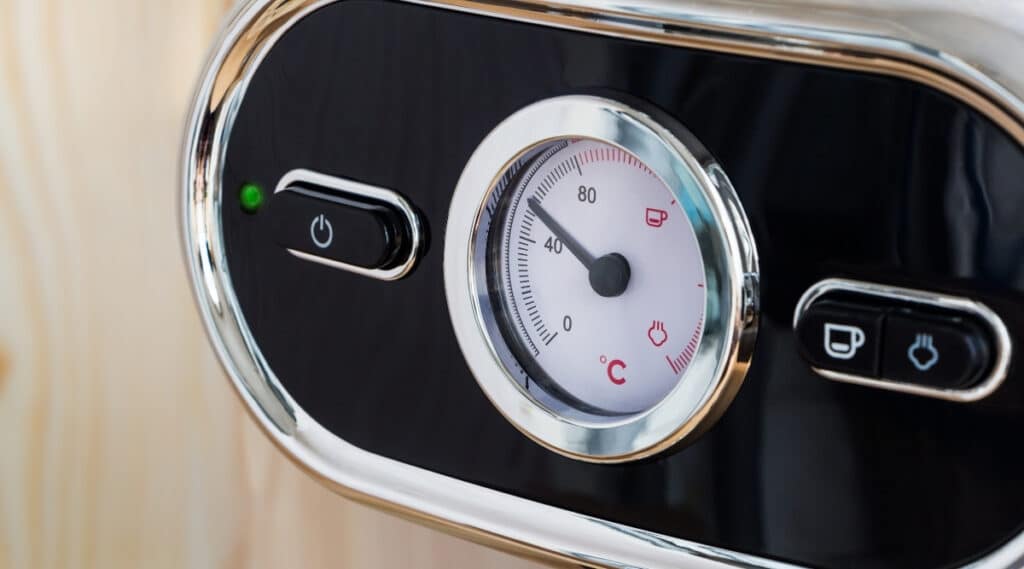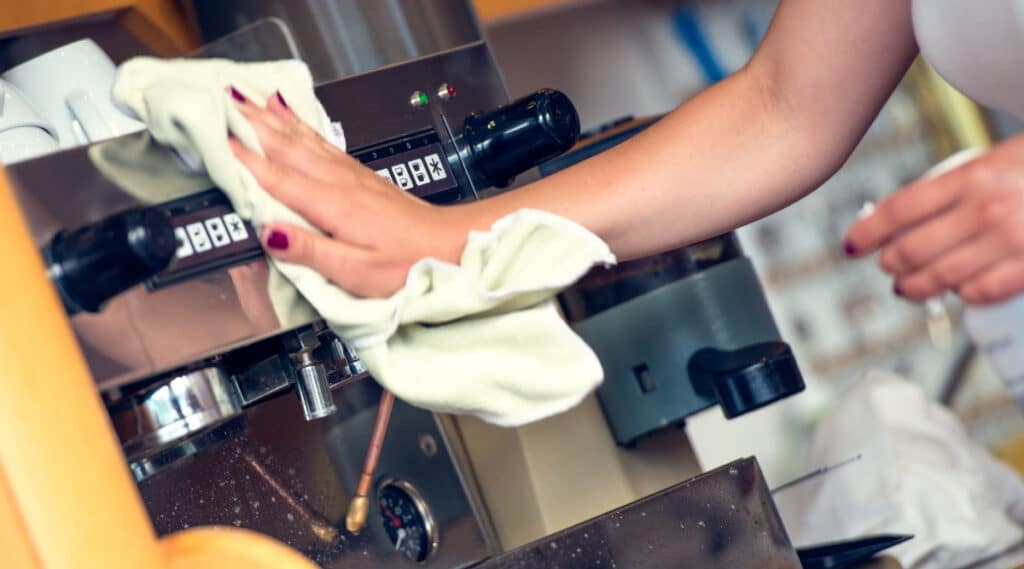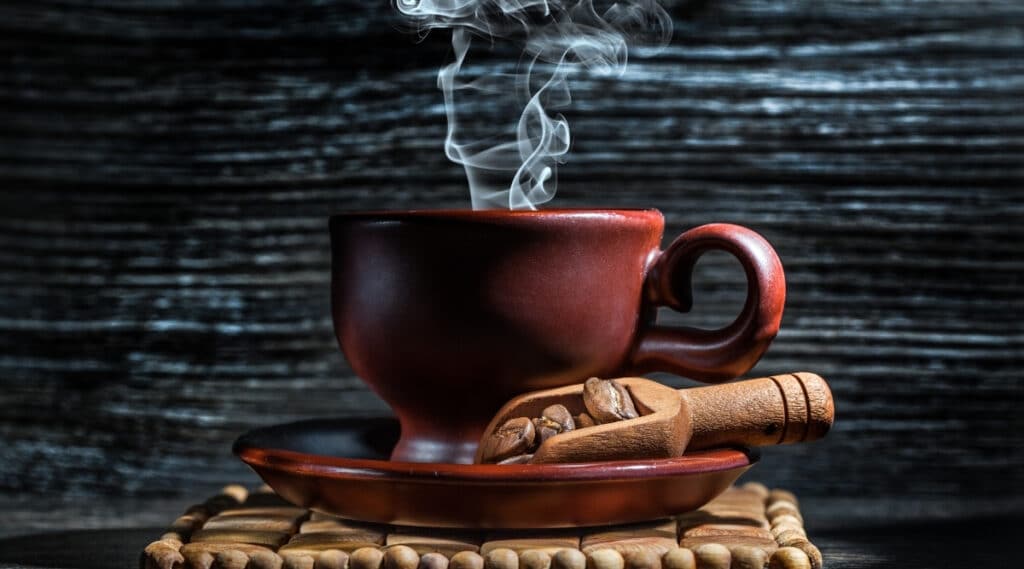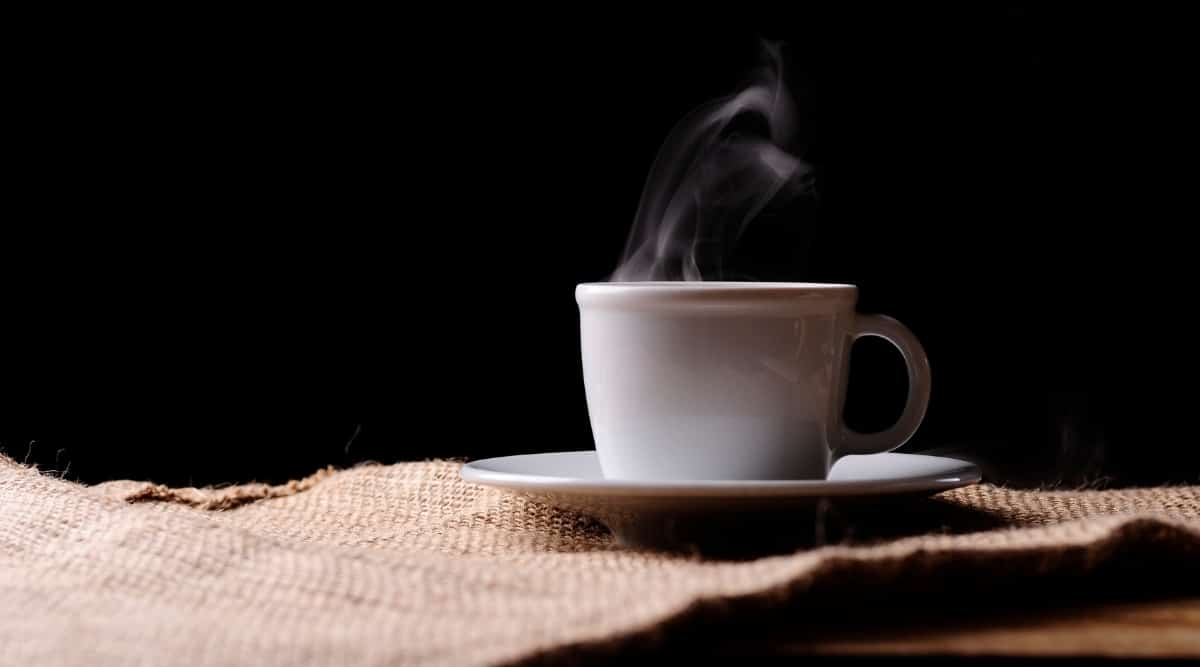If you regularly enjoy coffee at home, you may have concerns about bacteria in the water coming from your coffee maker. Even if you have access to clean water, it’s still a common concern among coffee drinkers, especially if you notice a change in taste. So, does a coffee maker boil water to kill bacteria?
Obviously, you don’t want to forgo maximum caffeination, but you need to know that your glorious cup of joe is safe to drink. Do coffee makers boil water to kill bacteria? Unfortunately, most traditional brewing machines don’t do the deed, but read on to learn what you can do to ensure your morning coffee fix is safe and delicious!
Contents
Time and Temperature Needed to Boil Water
Before looking at the water temperature in homebrew coffee machines, it helps to know the water’s boiling point. At sea level, water typically boils at 212°F. However, as you go to higher altitudes, the temperature drops slightly. For example, most of the western United States is 2000 feet or more above sea level, and water boils around 208°F.
It’s important to note that temperature isn’t the only thing to consider when boiling water to kill bacteria. Time is another factor because simply reaching a set temperature doesn’t matter if it doesn’t last long enough to destroy the bacteria. You must sustain the temperature for at least one minute to kill bacteria.
Speaking of time, read our review of top Keurig models that will brew your coffee in under 60 seconds.
Average Coffee Machine Temperature

Now that we know the temperature and time required to boil water let’s see how the average coffee maker measures up. On average, typical kitchen coffee makers heat water to around 200°F. Though there is some variation between brands and designs, they all fall short of the boiling point.
Additionally, if you consider the time required to kill bacteria, coffee pots don’t come close. Think about how long it takes to brew a pot of coffee from beginning to end, and it’s easy to see that your pot probably doesn’t heat the water long enough, even if it reached the requisite temperature.
As a side note, even commercial coffee makers fall short of the proper boiling temperature and time. Of course, the perfect cup of coffee doesn’t require boiling water to capture the flavor and color of those precious beans.
Do Coffee Makers Sanitize Water?
Sanitizing water is slightly different than sterilizing it. While sterilizing water removes bacteria and germs, sanitizing it means reducing those organisms to safe levels. Standard coffee makers don’t sanitize water either, though you can find some products that include built-in water filters.
Preferred Water Sources for Making Coffee
It is best to use clean, purified water in your coffee machines and makers when you can. Not only will you appreciate the flavor, but it will also keep your products operating optimally. This way, you can avoid any ill effects, like foul odors or residue in your coffee pots or your drink.
You can easily use bottled water or a filtration system to purify your water before pouring it into your water reservoir. However, if you do not have access to purified water, you can boil water on your stove to prepare the water ahead of time. You can also choose a stovetop coffee pot to prep your water in advance and cut out an extra step.
Of note, if you use a pot, pan, or kettle to boil water for coffee, make sure you clean it regularly to prevent build-up. Watch for scale build-up from minerals in the water, and if you have a water alert in your area, wash them with soap and hot water after every use.
Is It Time to Clean Your Coffee Maker?

A study by the National Sanitation Foundation found that 50% of the water reservoirs in one study contained mold or yeast signs.
If that knowledge isn’t enough to make you invoke a regular cleaning routine, you could watch for signs of trouble. That’s right; your most precious appliance gives off plenty of signals when it needs a good cleaning!
- You notice a bitter or off-putting taste with your morning cup.
- You get sick more often than usual.
- Coffee seems to spray everywhere during brewing.
- It takes more time to brew a pot of coffee.
- Your pot is extra-loud or makes noise, but no coffee comes out.
- Signs of scale or mold appear in the reservoir, pot, or anywhere else on the machine.
Many manufacturers suggest a monthly cleaning to keep your coffee maker operating efficiently. Regularly cleaning your coffee pot can help you manage harmful bacteria and scale buildup, but it’s still important to keep an eye on how your appliance operates. Any changes could indicate a need to clean more frequently.
How To Clean and Disinfect Your Coffee Maker
Now that you know there’s a fair chance your coffee maker contains more than water and coffee, what can you do about it? It’s best to consult the manufacturer’s directions for cleaning and disinfecting your coffee maker. However, some general methods apply to most makers.
Address the Removable Parts
Remove everything you can from your coffee maker. Wash any dishwasher-safe components in your dishwasher to save time. It helps to run them through a sanitize cycle if your machine has one.
If you have removable pieces that aren’t dishwasher-safe, wash them in your sink with hot water and dish soap. Allow them to thoroughly dry before returning them to your machine.
Don’t forget your carafe! It’s a good idea to wash it after each use, but if there’s not enough time in your busy schedule, try making it a weekly deal.
Decalcify Monthly
Cleaning your carafe and other removable parts helps keep your maker clean, but it doesn’t do much for the internal elements. That’s where a common household item comes in handy.
Vinegar is a known antibacterial agent. Though it’s not suggested for killing viruses or disinfecting surfaces, it’s a food-safe way to remove build-up in your maker to keep it clean and functional.
- Fill your water reservoir with equal parts water and vinegar. Distilled white vinegar works best and shouldn’t discolor any components since it’s clear.
- Add a filter in the basket, put your carafe in place, and brew as if you were making your morning pot.
- Stop the process halfway through and let it sit for half an hour.
- Resume the brewing cycle until it finishes.
- Dump the vinegar mixture in the sink.
- Rinse the carafe with warm water and add a new paper filter to the basket.
- Fill your reservoir with water and complete one brewing cycle.
- Dump the water and repeat the previous step once.
Coffee Makers, Boiling Water, and Killing Bacteria

The truth is that coffee makers won’t boil water hot enough or long enough to kill bacteria. Even worse, water isn’t the only source of bacteria and germs that can make you sick because your coffee maker can be a breeding ground for both if you don’t care for it.
If you only have access to unsafe water sources, it’s important to boil your water separately before brewing. However, you need to maintain your coffee maker as well to prevent bacteria and scale build-up inside your machine.
